John Doe and Billy Zoom keep things spare and powerful, with two basses and a single guitar–and 47 years of shared musical history–between them, as founding members of this historic American band.
There are plenty of mighty American rock bands, but relatively few have had as profound an impact on the international musical landscape as X. Along with other select members of punk’s original Class of 1977, including Patti Smith, Richard Hell, and Talking Heads, the Los Angeles-based outfit proved that rock ’n’ roll could be stripped to its bones and still be as literate and allusive as the best work of the songwriters who emerged during the previous decade and were swept up in the corporate-rock tidal wave that punk rebelled against. X’s first three albums–Los Angles, Wild Gift, and Under the Big Black Sun-were a beautiful and provocative foundation, and rocked like Mt. Rushmore.
Last year, X released a new album, Smoke & Fiction, and, after declaring it would be their last, embarked on what was billed as a goodbye tour, seemingly putting a bow on 47 years of their creative journey. But when PG caught up with X at Memphis’s Minglewood Hall in late fall, vocalist and bassist John Doe let us in on a secret: They are going to continue playing select dates and the occasional mini-tour, and will be part of the Sick New World festival in Las Vegas in April 12.
Not-so-secret is that they still rock like Mt. Rushmore, and that the work of all four of the founders–bassist, singer, and songwriter Doe, vocalist and songwriter Exene Cervenka, guitarist Billy Zoom, and drummer D.J. Bonebreak–remains inspired.
Onstage at Minglewood Hall, Doe talked a bit about his lead role in the film-festival-award-winning 2022 remake of the film noir classic D.O.A. But most important, he and Zoom let us in on their minimalist sonic secrets.Brought to you by D’Addario.
Gretsch A Sketch
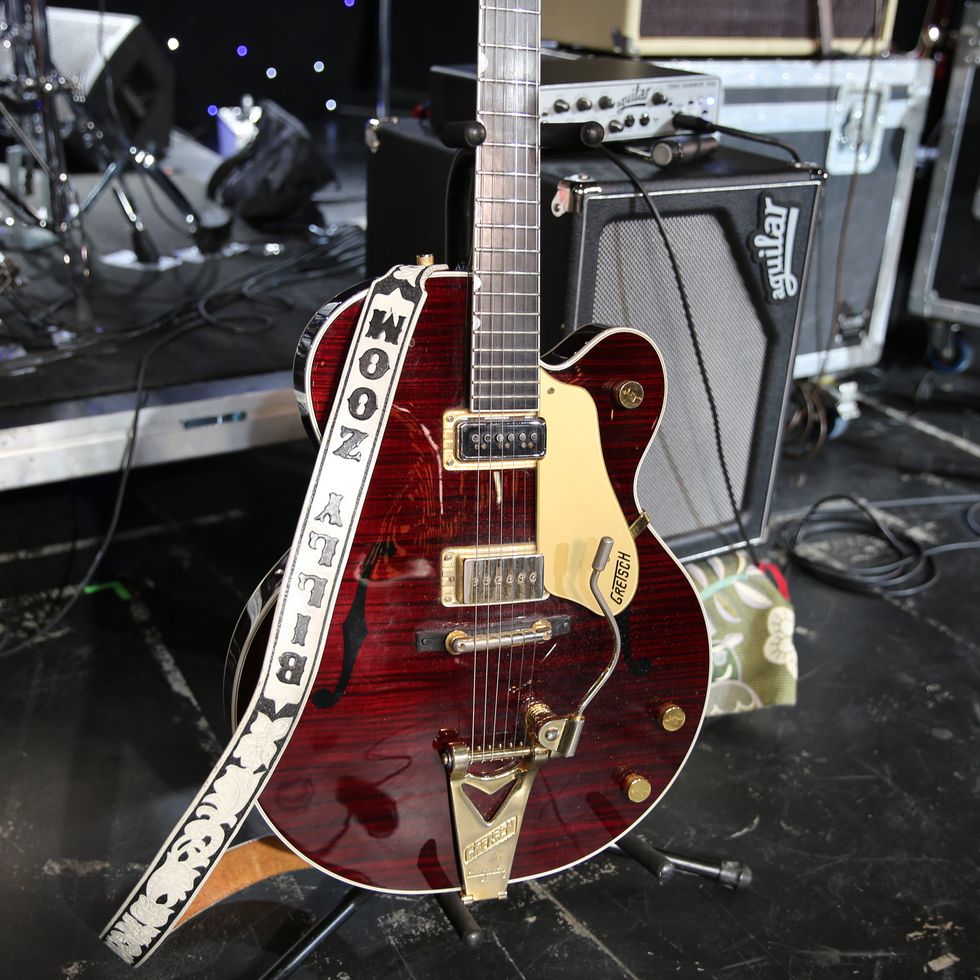
Since X’s earliest days, Billy Zoom has played Gretsches. In the beginning, it was a Silver Jet, but in recent years he’s preferred the hollowbody G6122T-59 Vintage Select Chet Atkins Country Gentleman. This example roars a little more thanks to the Kent Armstrong P-90 in the neck and a Seymour Duncan DeArmond-style pickup in the bridge. Zoom, who is an electronics wiz, also did some custom wiring and has locking tuners on the guitar.
More DeArmond
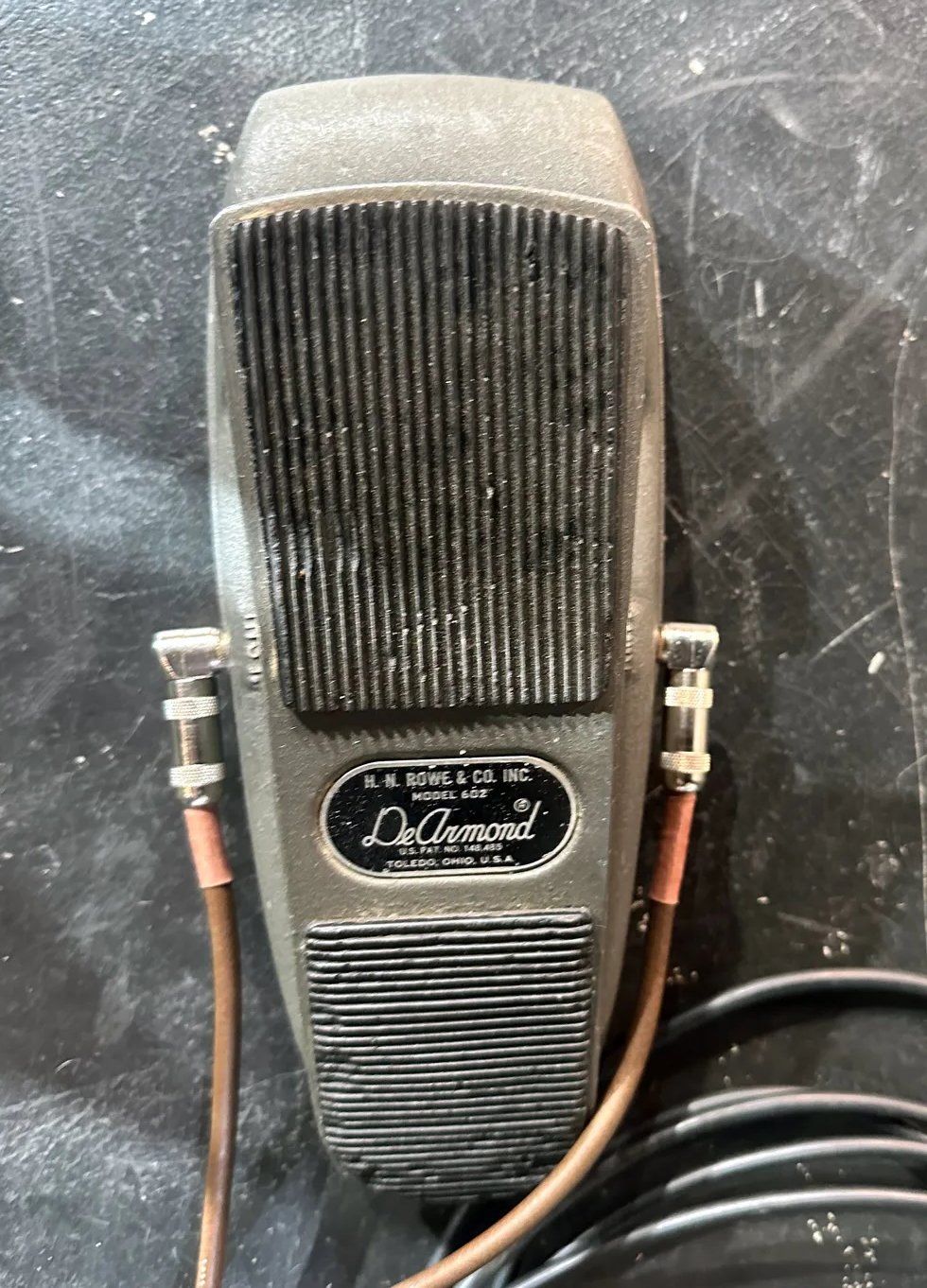
Zoom’s sole effect is this vintage DeArmond 602 volume pedal. It helps him reign in the feedback that occasionally comes soaring in, since he stations himself right in front of his amp during shows.
It's a Zoom!
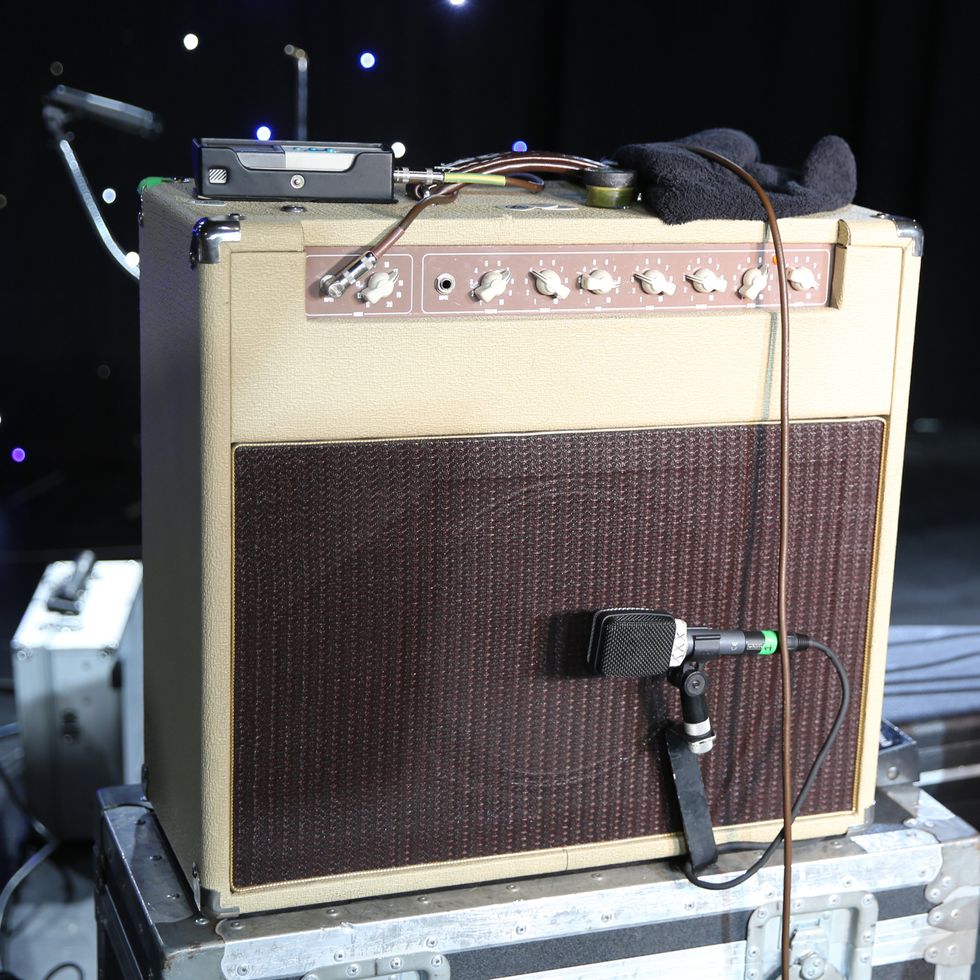
Zoom’s experience with electronics began as a kid, when he began building items from the famed Heath Kit series and made his own CB radio. And since he’s a guitarist, building amps seemed inevitable. This 1x12 was crafted at the request of G&L Guitars, but never came to market. It is switchable between 10 and 30 watts and sports a single Celestion Vintage 30.
Tube Time!
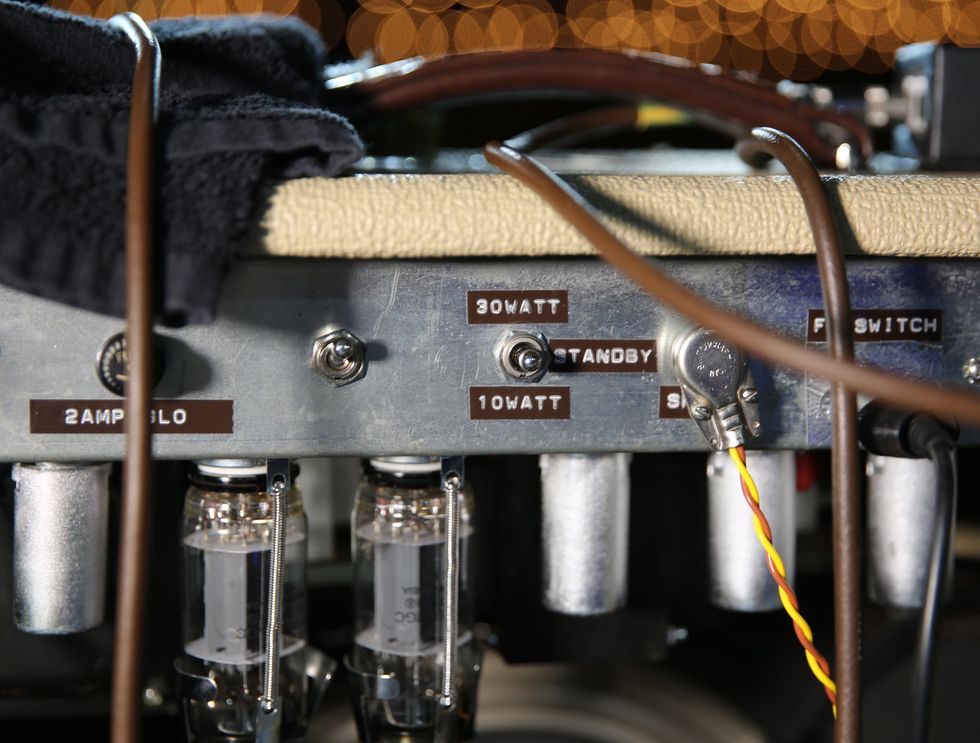
The tube array includes two EL84, 12AX7s in the preamp stage, and a single 12AT7. The rightmost input is for a reverb/tremolo footswitch.
Set the Controls for the Heart of the Big Black Sun
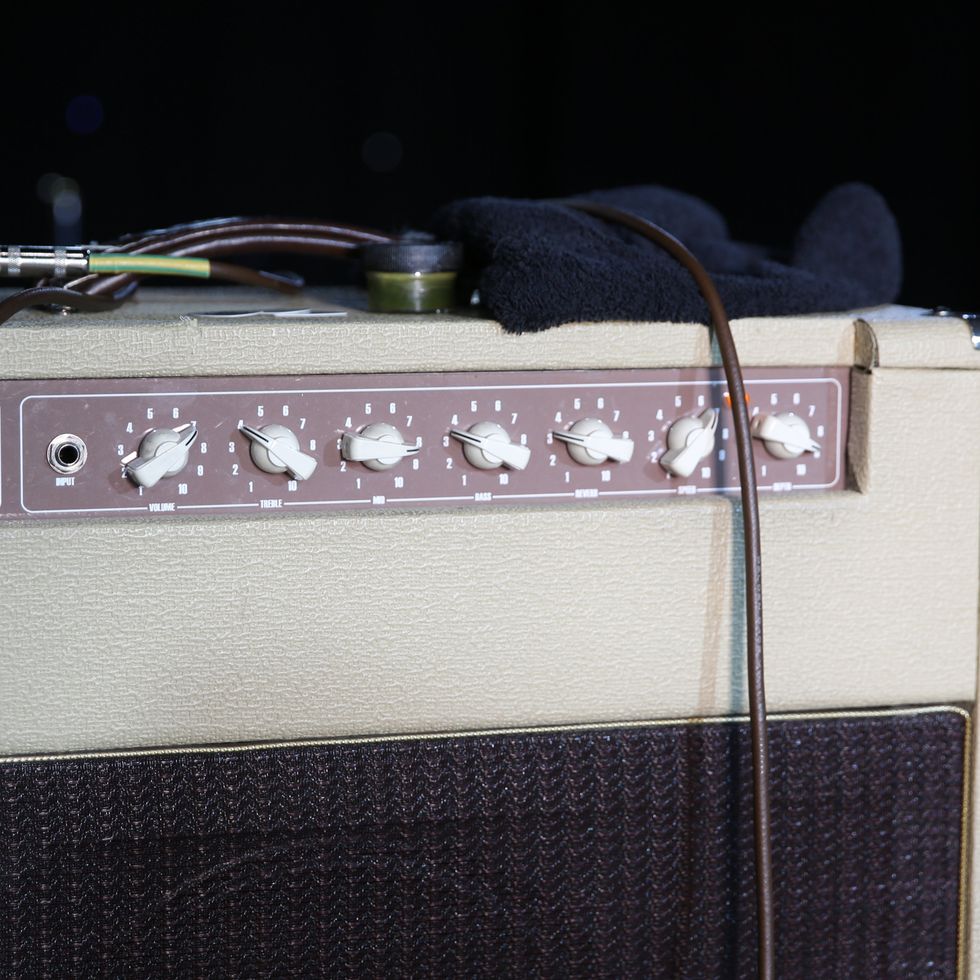
Besides 3-band EQ, reverb, and tremolo, Zoom’s custom wiring allows for a mid-boost that pumps up to 14 dB. Not content with 11, it starts there and goes to 20.
Baby Blue
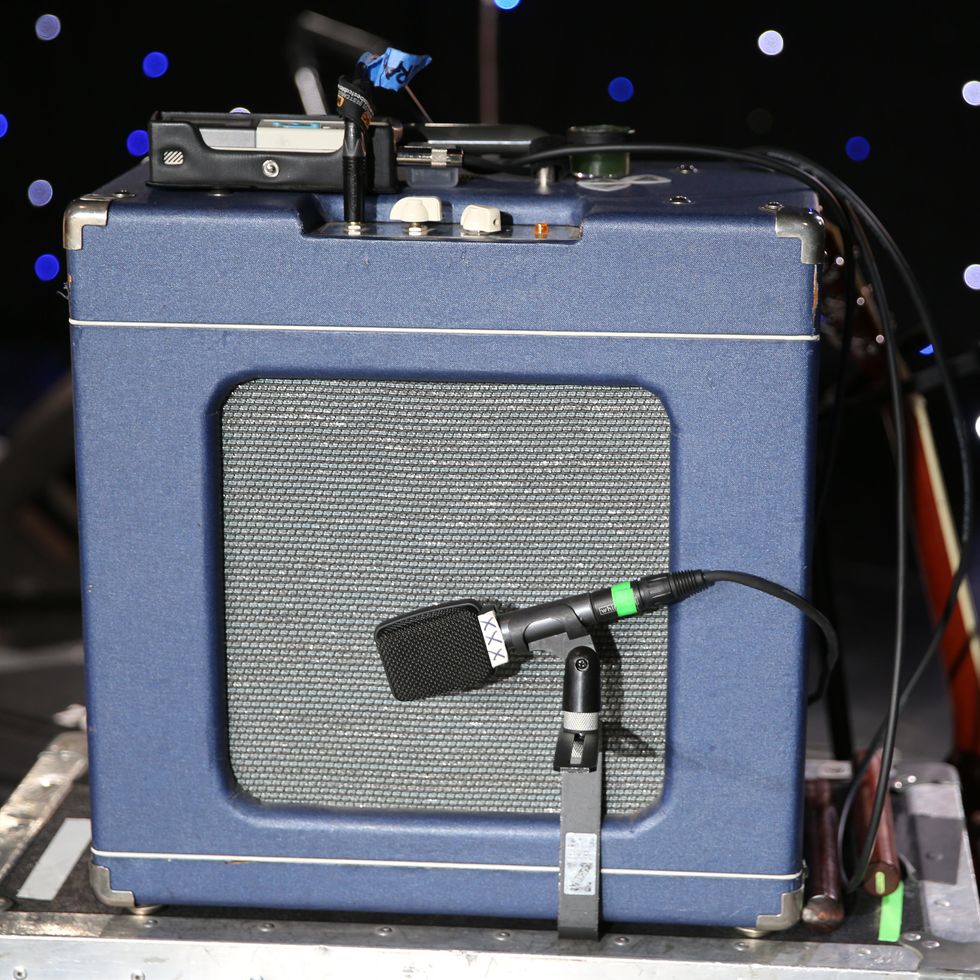
This amp is also a Zoom creation, with just a tone and volume control (the latter with a low boost). It also relies on 12AX7s and EL84s.
Big Bottom
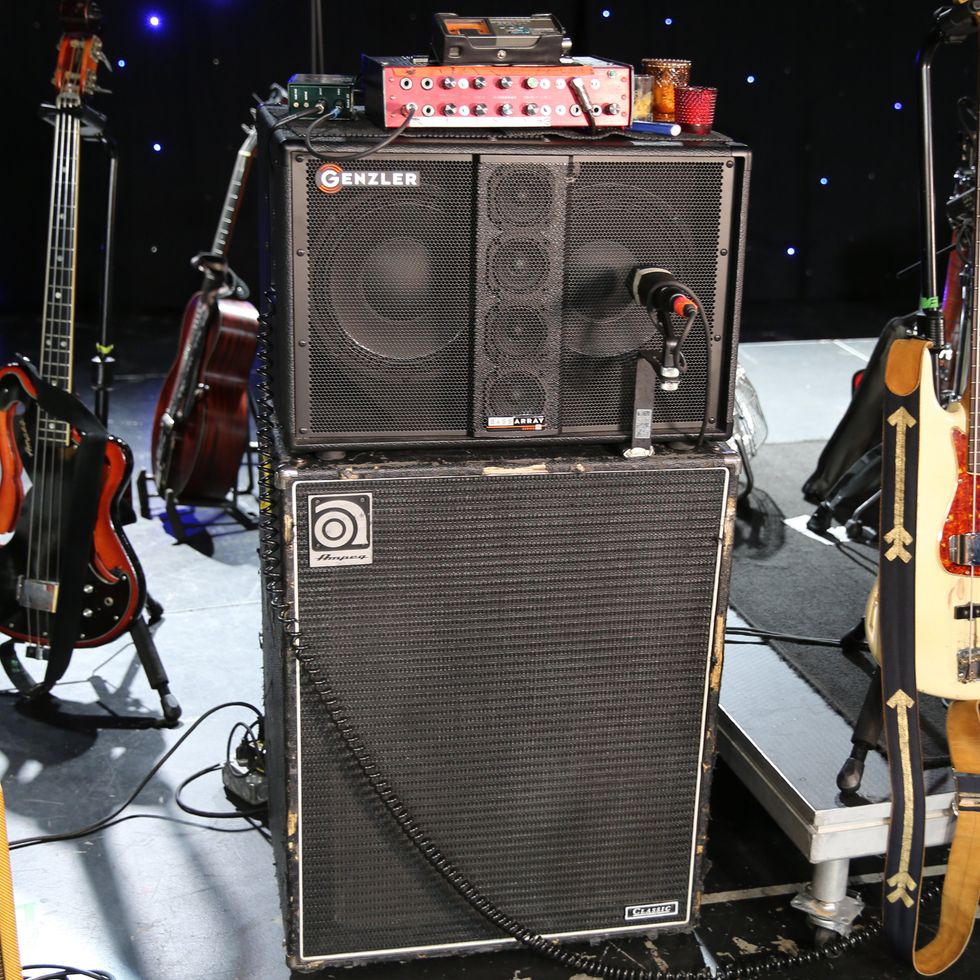
Here is John Doe’s rig in full: Ampeg and Fender basses, with his simple stack between them. The red head atop his cabs is a rare bird: an Amber Light Walter Woods from the 1970s. These amps are legendary among bass players for their full tone, and especially good for upright bass and eccentric instruments like Doe’s scroll-head Ampeg. “I think they were the first small, solid-state bass amps ever,” Doe offers. They have channels designated for electric and upright basses (Doe says he uses the upright channel, for a mid-dier tone), plus volume, treble, bass, and master volume controls. One of the switches puts the signal out of phase, but he’s not sure what the others do. Then, there’s a Genzler cab with two 12" speakers and four horns, and an Ampeg 4x10.
Scared Scroll

Here’s the headstock of that Ampeg scroll bass, an artifact of the ’60s with a microphone pickup. Doe seems to have a bit of a love/hate relationship with this instrument, which has open tuners and through-body f-style holes on its right and left sides. “The interesting thing,” he says, “is that you cannot have any treble on the pickup. If you do, it sounds like shit. With a pick, you can sort of get away with it.” So he mostly rolls off all the treble to shake the earth.
Jazz Bass II
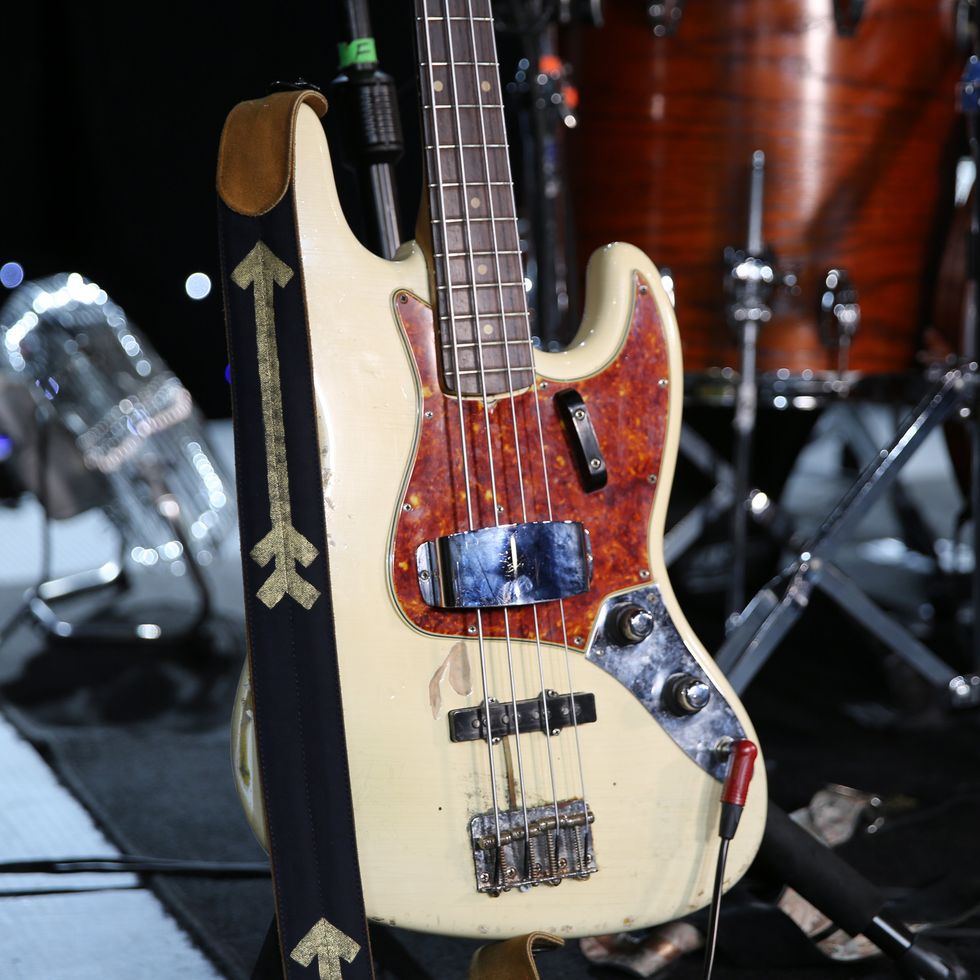
This is the second Fender Jazz Bass that Doe has owned. He bought his first from a friend in Baltimore for $150, and used it to write and record most of X’s early albums. That one no longer leaves home. But this touring instrument came from the Guitar Castle in Salem, Oregon, and was painted to recreate the vintage vibe of Doe’s historic bass.






![Rig Rundown: AFI [2025]](https://www.premierguitar.com/media-library/youtube.jpg?id=62064741&width=1245&height=700&quality=70&coordinates=0%2C0%2C0%2C0)








 Zach loves his Sovtek Mig 60 head, which he plays through a cab he built himself at a pipe-organ shop in Denver. Every glue joint is lined with thin leather for maximum air tightness, and it’s stocked with Celestion G12M Greenback speakers.
Zach loves his Sovtek Mig 60 head, which he plays through a cab he built himself at a pipe-organ shop in Denver. Every glue joint is lined with thin leather for maximum air tightness, and it’s stocked with Celestion G12M Greenback speakers.










![Devon Eisenbarger [Katy Perry] Rig Rundown](https://www.premierguitar.com/media-library/youtube.jpg?id=61774583&width=1245&height=700&quality=70&coordinates=0%2C0%2C0%2C0)












































